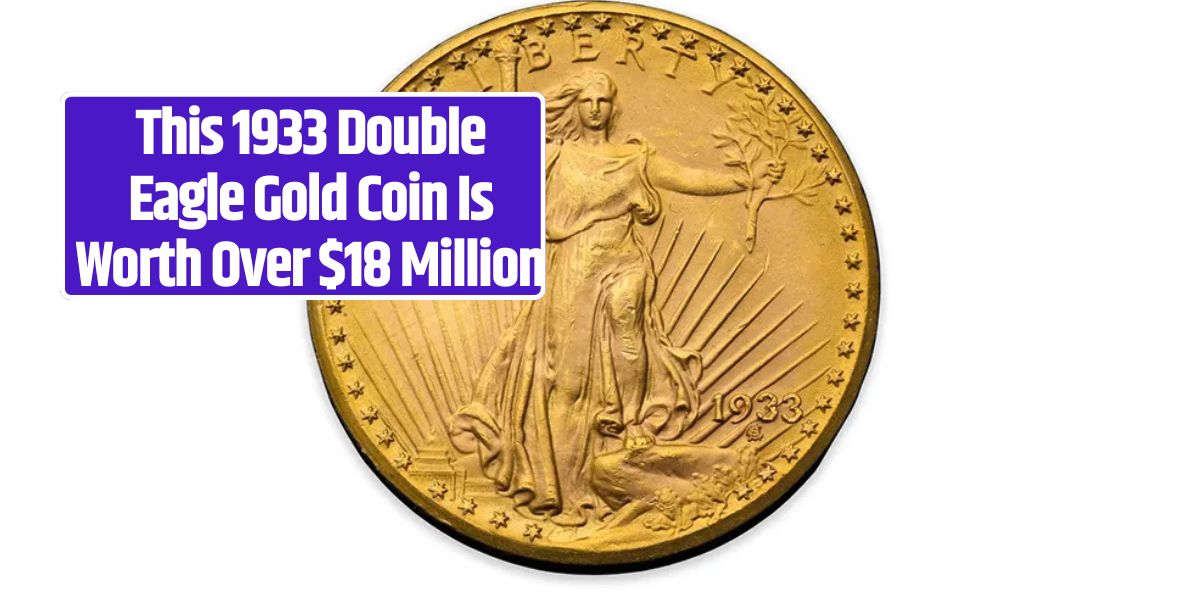The 1933 Double Eagle gold coin is a fascinating piece of American history and one of the most sought-after artifacts in the numismatic world. Originally valued at $20, this coin set a new auction record in 2021 by selling for an astonishing $18.87 million, marking it as the most expensive coin ever sold. Here’s a look into the unique story of the 1933 Double Eagle and the factors that contribute to its remarkable value.
Origins and Design of the 1933 Double Eagle
The Double Eagle design was born from President Theodore Roosevelt’s vision of bringing artistry to American currency in the early 20th century. The task fell to acclaimed sculptor Augustus Saint-Gaudens, who created a design that many consider the pinnacle of U.S. coin artistry. The obverse side of the coin showcases Lady Liberty holding a torch and olive branch, symbolizing enlightenment and peace. On the reverse, a majestic eagle is depicted in mid-flight. This stunning design, produced with meticulous detail, has made the Double Eagle a lasting symbol of American beauty and artistry in coinage.
The Gold Recall of 1933 and Rarity of the Coin
In 1933, as the Great Depression continued to impact the U.S. economy, President Franklin D. Roosevelt made the significant decision to remove the country from the gold standard. This policy shift led to an executive order mandating the melting of all gold coins, including the newly minted 1933 Double Eagles, to prevent them from circulating. While 445,500 of these coins were minted, nearly all were subsequently destroyed, rendering any surviving coins exceedingly rare and valuable. The very act that was intended to stabilize the economy transformed the surviving Double Eagles into some of the most coveted collectibles in history.
The Weitzman Specimen: The Only Privately Owned Double Eagle
Despite the government’s efforts, a small number of 1933 Double Eagles survived and eventually found their way into private collections. Through a series of legal battles, the U.S. government has worked to reclaim these rare coins. Today, only one legally remains in private hands, known as the “Weitzman Specimen” after its previous owner, fashion designer Stuart Weitzman. This coin’s unique provenance and rare legal status further elevate its appeal to collectors and investors alike, as it remains the only 1933 Double Eagle that can legally be held by an individual.
Record-Breaking Auction Sale
In June 2021, Sotheby’s auctioned the Weitzman Specimen for an unprecedented $18.87 million. This sale shattered prior records and set a new standard for rare coins. Far surpassing its estimated sale price of $10 to $15 million, the record-breaking figure reflects the intense interest among collectors who view this coin as a piece of history that carries a rare mix of beauty, cultural significance, and scarcity.
Key Milestones in the 1933 Double Eagle’s History
| Year | Event |
|---|---|
| 1907 | Augustus Saint-Gaudens creates the Double Eagle design. |
| 1933 | 445,500 Double Eagles are minted. |
| 1934 | Government mandates the melting of all 1933 Double Eagles. |
| 1944 | King Farouk of Egypt legally acquires one of the coins. |
| 2002 | The first legal private sale of the coin occurs for $7.59 million. |
| 2021 | Sotheby’s sells the coin for a record $18.87 million. |
Why the 1933 Double Eagle Is So Valuable
Several factors make the 1933 Double Eagle an incredibly valuable and sought-after coin:
- Rarity: The combination of limited surviving coins and government efforts to reclaim any remaining examples makes this one of the rarest coins in existence.
- Historical Significance: As a product of the era when the U.S. left the gold standard, the 1933 Double Eagle serves as a reminder of a critical economic turning point.
- Artistic Merit: The intricate design by Saint-Gaudens has set a standard for U.S. currency, and this coin is widely regarded as one of the most beautiful pieces in American numismatics.
- Unique Legal Status: The Weitzman Specimen’s designation as the only 1933 Double Eagle legally allowed in private hands adds substantial value, making it a one-of-a-kind collectible.
- Auction Prestige: The record-setting sale price at Sotheby’s elevates the coin’s status and allure, solidifying its position as an extraordinary asset in the collecting world.
The 1933 Double Eagle transcends its monetary origins, encapsulating a momentous period in U.S. history and embodying artistic and legal intrigue. Its path from the melting pot to an $18.87 million artifact highlights its status as a prized possession and a cultural artifact of exceptional worth.
What is the 1933 Double Eagle coin?
The 1933 Double Eagle is a U.S. $20 gold coin designed by Augustus Saint-Gaudens. Though many were minted, almost all were melted down as part of the U.S. government’s move off the gold standard.
Why was the 1933 Double Eagle coin recalled?
The recall was part of a policy by President Franklin D. Roosevelt to stabilize the economy during the Great Depression, which involved taking the U.S. off the gold standard and melting down gold coins.
Who owned the only privately held 1933 Double Eagle?
The only privately owned 1933 Double Eagle is known as the “Weitzman Specimen,” named after its former owner, designer Stuart Weitzman.
















